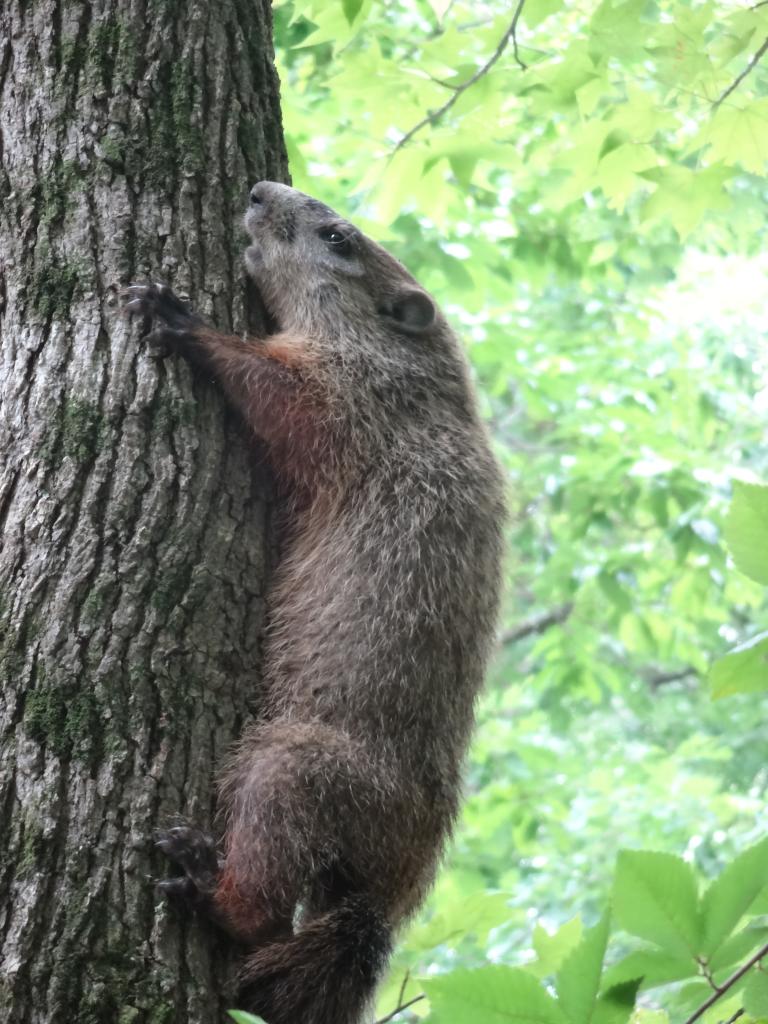|
| Distribution |
In NC, it occurs throughout the mountains, nearly throughout the Piedmont, and into the northern third to half of the Coastal Plain, except lacking records for counties south of Albemarle Sound. Possibly absent in a few southeastern Piedmont counties, but the species is spreading southward in the Coastal Plain, and seemingly also in the Piedmont. There are recent photo records south to Onslow and Pender counties, though the species seems very scarce in these southern counties. Expected eventually to be found in the few southeastern Piedmont counties lacking records, but not expected to be found in the near future in the far southeastern Coastal Plain counties.
Quite widespread for a rodent, ranging from coast to coast, across most of the southern half of Canada and the northeastern United States. It ranges south to NC, AL, and AR. |
| Abundance |
Common and widespread in the mountains; common in the northwestern Piedmont, but decreasing in abundance southward and eastward, but fairly common now to the northeastern part of the Piedmont. Scarce to possibly absent in Piedmont counties east of Charlotte and near or along the SC border. Uncommon but increasing in the northern Coastal Plain, spreading southward fairly rapidly. Note that the iNaturalist website contains photos for nearly half of the state's counties, and the editors have not taken the time to update the map with "Photo" records/documentation unless the county had previously no known records (white on the map). |
| Seasonal Occurrence |
Active all year in the Coastal Plain, and probably parts of the Piedmont. However, hibernates in the mountains and probably so in much of the Piedmont. |
| Habitat |
Favors montane meadows and pastures, often near wooded edges and open woods. Farther eastward, often in wooded margins or even inside forests, but often around roadbanks and roadsides where there are vertical or near-vertical banks. In the Coastal Plain, they also occur in wooded areas, usually near edges, as well as along roadbanks. Thus, downstate they are more likely to be found near roadsides where there are banks (often man-made), as opposed to the mountains, where there is much more topography.
See also Habitat Account for Forest-Field Ecotones and Groves |
| Behavior |
Woodchucks are active most often in early morning and late afternoon, ane sometimes at night. They are not as active in the middle of the day, particularly in the heat of summer. They are commonly seen feeding along grassy road edges, and many are killed on roads. They create extensive burrows, and the burrow openings are fairly conspicuous and often seen in forested banks. |
| Comments |
The species is clearly moving south and increasing in abundance, perhaps as many newer roads and highways now are raised on built-up ground, allowing the mammals to be able to burrow into the man-created banks. They are considered as pests in much of the range, such as in the mountains, where ranchers are fearful of their livestock breaking a leg by stepping into a woodchuck burrow. |
| Origin |
Native |
| NC List |
Official |
 State Rank State Rank |
S5 |
| State Status |
|
 Global Rank Global Rank |
G5 |
| Federal Status |
|
| subspecies |
Marmota monax monax |
| other_comName |
Groundhog |
| synonym |
|



